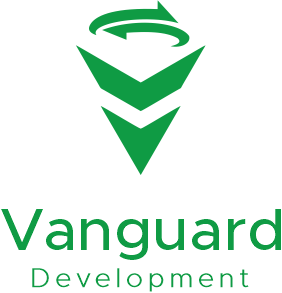Insider Tips: Securing Funding for Your Next Major Commercial Project
Securing funding for a major commercial project is one of the most critical steps to ensuring its success. With various financing options available, each carrying unique benefits and challenges, finding the right funding approach requires strategy, preparation, and insight. This guide provides insider tips to help you navigate the funding process, connect with the right investors, and leverage innovative financing options for a successful project launch.
1. Create a Compelling Business Plan
Your business plan is often the first document investors will review, and it needs to clearly convey your vision, project scope, financial projections, and risk mitigation strategies. Make it as comprehensive as possible, with a well-defined project timeline, projected returns, and details about the project’s impact on the community.
- Insider Tip: Include specific data on how your project addresses market needs, such as occupancy rates, demand forecasts, and competitive analyses. This strengthens your plan’s credibility and demonstrates an understanding of market dynamics.
2. Build Relationships with Lenders and Investors Early
Funding doesn’t just hinge on numbers; it’s also about relationships. Building rapport with lenders, venture capitalists, and private investors long before you need funding can make a significant difference when you’re ready to seek financing.
- Insider Tip: Attend industry conferences, networking events, and local business meet-ups to connect with potential investors. Keep them updated on your progress, demonstrating your professionalism and commitment to the project.
3. Consider a Joint Venture (JV) Partnership
Joint venture financing is a powerful way to secure funding, especially for large-scale commercial projects. A JV partnership allows you to pool resources with another investor or company, sharing costs, risks, and rewards. This approach can significantly reduce the amount of personal capital required upfront.
- Insider Tip: Look for a JV partner whose skills, industry experience, and network complement your own. A strong partnership can provide not only financial backing but also expertise and insights that can drive project success.
4. Explore 100% Financing for Qualified Projects
Some financing programs and partnerships offer 100% financing, which means the lender covers the entire cost of the project. This can be ideal for urban revitalization or green projects, where municipalities or public-private partnerships are often interested in stimulating development.
- Insider Tip: To qualify for 100% financing, demonstrate the broader economic or social impact of your project, such as job creation, sustainable practices, or contributions to affordable housing. These factors often make lenders more willing to fully finance projects with a positive community impact.
5. Utilize Government Incentives and Grants
Many government programs offer grants, tax credits, and low-interest loans to encourage commercial real estate development in targeted areas. These incentives can help offset costs and make your project more attractive to traditional lenders.
- Insider Tip: Research local, state, and federal incentives tailored to your project type, such as opportunity zone tax breaks, environmental grants, or small business programs. Applying for these incentives can also demonstrate to other investors that your project has government support.
6. Be Strategic with Debt and Equity Mix
Finding the right balance between debt and equity financing can optimize your capital structure, reduce risks, and improve project returns. Equity financing (e.g., through private equity) provides you with cash without repayment obligations, whereas debt financing (e.g., commercial mortgages) gives you capital but requires regular payments.
- Insider Tip: Start with a solid base of equity to attract lenders for the remaining debt. Investors typically view a project with a higher equity stake as lower risk, making it easier to secure debt financing at favorable rates.
7. Develop a Risk Mitigation Strategy
Investors want to see that you’ve anticipated potential risks and have measures in place to manage them. Addressing risks like cost overruns, project delays, and market volatility upfront reassures investors that their money is secure.
- Insider Tip: Highlight your contingency plan, which could include cash reserves, insurance policies, or partnerships with experienced contractors. Outline how these measures will mitigate risks and protect investor interests.
8. Leverage Technology to Streamline Financial Management
Digital tools can help you manage budgets, track project progress, and generate reports, making it easier to communicate project updates to stakeholders. Technology platforms that provide data analytics, project forecasts, and financial insights are particularly useful for keeping investors informed and confident.
- Insider Tip: Consider using software specifically designed for real estate development, such as Procore, Reonomy, or Argus. These tools can simplify financial tracking, improve transparency, and demonstrate your commitment to efficiency.
9. Look for Alternative Funding Sources
If traditional lenders are hesitant, explore alternative funding methods such as crowdfunding, mezzanine financing, or bridge loans. These options can be especially useful for bridging short-term gaps or securing initial capital until you establish a stronger financial foundation.
- Insider Tip: Mezzanine financing combines debt and equity, giving you capital without ceding too much control. Alternatively, crowdfunding can help you gauge public interest and build a network of smaller investors eager to support your project.
10. Highlight ESG (Environmental, Social, and Governance) Initiatives
Projects that incorporate ESG elements are increasingly attractive to socially conscious investors. Emphasize sustainable practices, community benefits, and good governance to appeal to investors interested in positive social impact.
- Insider Tip: Demonstrate how your project aligns with ESG criteria, such as reducing carbon footprints, enhancing local infrastructure, or creating affordable housing. This can set you apart from other projects and make it easier to secure funding from ESG-focused investors.


Leave A Comment